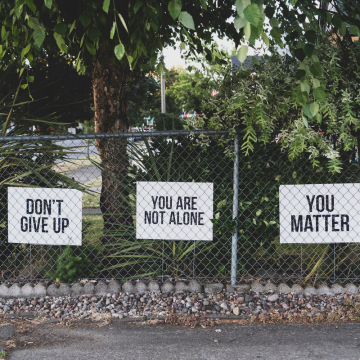
The question is twofold:
- Does suicide have an impact on the near-death experience?
- Can discovering NDE stories make people want to commit suicide?
A first piece of good news
This refers to NDEs experienced following a suicide attempt: people felt no condemnation for their act. As one of them put it: “I was at peace with myself. I could only see myself and my life through the love of this Being. Neither this Being of Love, nor I, blamed anything I had done in my life. Even my suicide attempt. This desperate act was transformed by the action of true Love. This grace, this total acceptance, this infinite tenderness and truth gave me great joy.
The second point is that most of these experimenters realized that their suicide was not, in fact, the solution to their problems. They knew their lives had meaning and were worth living, despite their difficulties.
Finally, some experimenters were able to realize, during the review of life, the suffering that their suicide would cause their loved ones. Or they may have experienced a more negative NDE than others.
Second piece of good news: NDEs do not incite suicide
As soon as “Life after Life” was published in 1975, Raymond Moody wondered whether his book might encourage people to commit suicide. He feared that testimonies of a peaceful death and a happy, joyful afterlife would encourage people in difficulty to end their lives voluntarily.
However, no medical or epidemiological publication has reported an increase in suicides linked to the growing dissemination of NDE testimonies. Even though the book “Life after Life” alone has sold 13 million copies worldwide, making a major impact. If this increase had occurred, the critics of NDE specialists would not have failed to denounce it.
What’s more, knowing intellectually that NDEs describe, for the most part, a peaceful afterlife probably doesn’t make it any easier to make the concrete transition to an act as heavy and frightening as killing oneself. Taking one’s own life requires a level of distress, despair and sense of isolation that is, fortunately, quite rare[1].
On the contrary, many testimonies from people who have had a near-death experience following a suicide attempt show a new taste for life after their NDE. Perhaps they are also likely to reduce their readers’ desire to commit suicide.
What’s more, it seems that none of the experiencers wanted to commit suicide in order to return to the happiness they had experienced during their NDE. Even those who experience depression after their NDE do not see suicide as a possible remedy.
The message from the experiencers is that, if the afterlife is full of love and happiness, it begins to be built now. NDEs can certainly make us more serene about death. But they invite us first – and foremost – to put as much love as possible into our present life, to give it maximum meaning and richness.
[1] The WHO estimates the annual suicide rate worldwide at around 10 per 100,000 people.
More on Raymond Moody: https: //fr.wikipedia.org/wiki/Raymond_Moody
On the same subject, here’s the article on Chris Batts’ NDE after his suicide attempt

